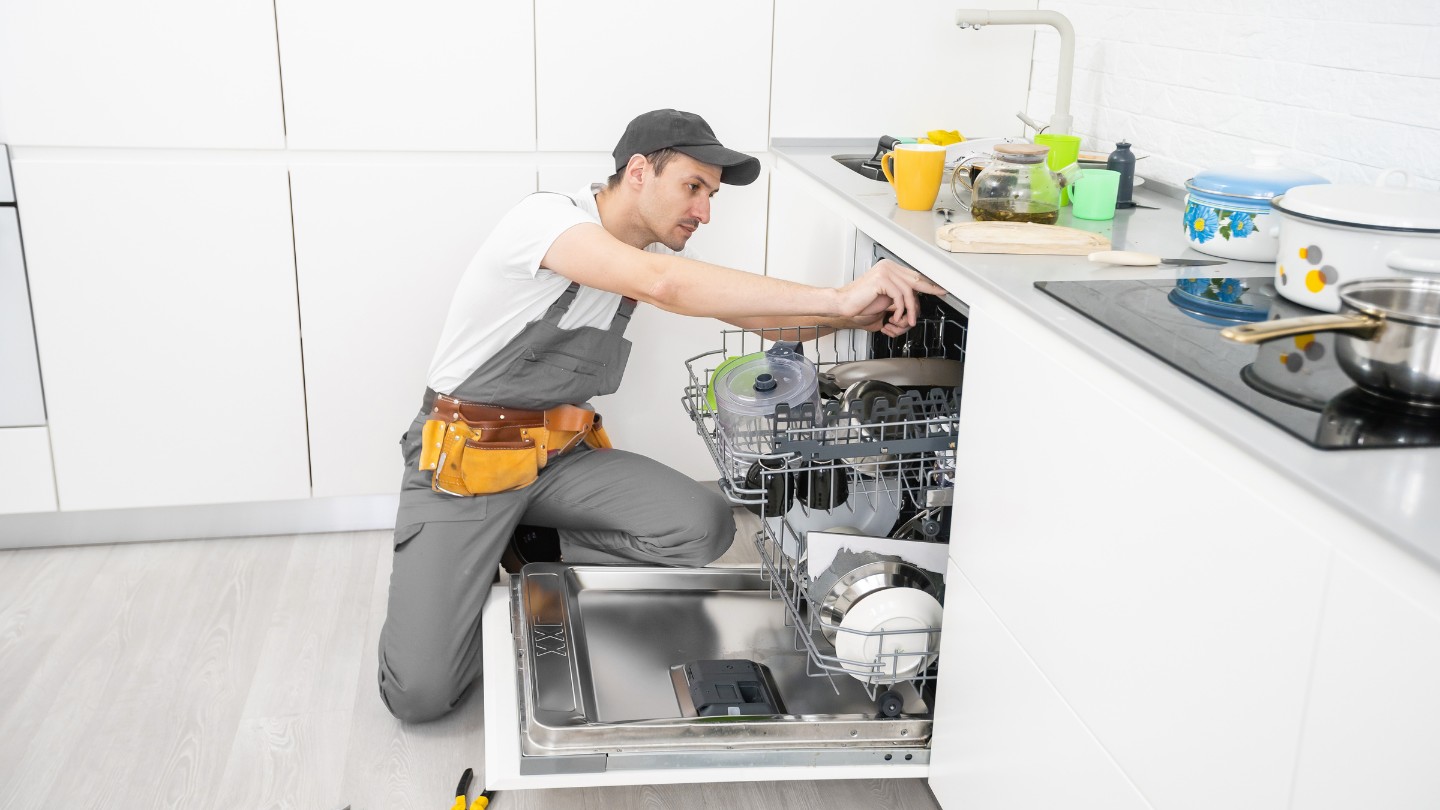

Articles
Sink Backing Up When Dishwasher Runs
Modified: February 23, 2024
Having trouble with a sink backing up when your dishwasher runs? Check out our articles for helpful tips and solutions to fix this issue.
(Many of the links in this article redirect to a specific reviewed product. Your purchase of these products through affiliate links helps to generate commission for Storables.com, at no extra cost. Learn more)
Introduction
One of the common household plumbing issues that homeowners often encounter is a sink backing up when the dishwasher runs. It can be quite frustrating to experience this problem, as it not only affects the functionality of the sink but also disrupts the smooth operation of the dishwasher. Understanding the causes behind this issue and knowing how to address it can save you from further inconveniences and potential damage to your plumbing system.
In this article, we will explore the common causes of sink backing up when the dishwasher runs and provide you with practical steps to fix the problem. From blockages in the drain line to improper installation of the dishwasher drain hose, we will cover various factors that can contribute to this issue. By identifying the root cause and following the appropriate troubleshooting steps, you can restore the proper functioning of your sink and dishwasher.
So, let’s dive in and explore the potential reasons behind sink backing up when the dishwasher runs, and learn how to resolve the issue effectively.
Key Takeaways:
- Don’t let a sink backing up when the dishwasher runs ruin your day. Clear blockages, adjust the drain hose, unclog the garbage disposal, and inspect the venting system to restore proper drainage and functionality.
- Regular maintenance and proactive measures can prevent future occurrences of sink backing up. Follow the steps outlined to troubleshoot and resolve the issue, ensuring a smoothly running kitchen.
Read more: How To Hook Up A Dishwasher To The Sink
Common Causes of Sink Backing Up When Dishwasher Runs
When your sink backs up while the dishwasher is running, it is important to identify the underlying causes to resolve the issue effectively. Here are some common factors that can lead to this problem:
- Blockage in the Drain Line: One of the most common causes of sink backing up when the dishwasher runs is a blockage in the drain line. Over time, food particles, grease, and other debris can accumulate and create a clog in the drain pipe. This can obstruct the flow of water from the dishwasher, causing it to back up into the sink.
- Improper Installation of Dishwasher Drain Hose: Another potential cause of sink backing up is the improper installation of the dishwasher drain hose. If the drain hose is not connected correctly or if it is not positioned higher than the drain pipe, it can cause water to flow back into the sink during the dishwasher’s drain cycle.
- Clogged Garbage Disposal: If your kitchen sink is equipped with a garbage disposal unit, a clogged or malfunctioning disposal can contribute to sink backing up when the dishwasher runs. When the garbage disposal is blocked, it can prevent proper drainage, causing water to back up into the sink.
- Venting Issues: The plumbing system in your home relies on proper venting to allow air to escape and prevent suction or pressure build-up. If there is a venting issue, such as a blocked vent or a faulty air admittance valve, it can disrupt the drainage process and result in sink backing up when the dishwasher is in use.
- Faulty Check Valve: A malfunctioning check valve in the dishwasher drain line can also lead to the backup of water into the sink. The check valve is responsible for preventing water from flowing back into the dishwasher after it has been drained. If the check valve fails, water can flow in the opposite direction, causing the sink to back up.
These are some of the common causes of sink backing up when the dishwasher runs. By understanding these factors, you can narrow down the issue and take appropriate steps to resolve it. In the following sections, we will discuss the steps you can take to fix the problem based on the identified cause.
Blockage in the Drain Line
A blockage in the drain line is one of the most common causes of sink backing up when the dishwasher runs. Over time, food particles, grease, and other debris can accumulate in the drain pipe, creating a clog that restricts the flow of water. When the dishwasher drains water, it encounters resistance from the blockage, causing it to back up into the sink.
To address this issue, you will need to clear the blockage in the drain line. Here’s a step-by-step guide:
- Step 1: Gather the necessary tools: Before you begin, gather some essential tools such as a plunger, a pipe wrench, a plumber’s snake, and a bucket to collect any water that may spill out during the process.
- Step 2: Disconnect the dishwasher: Start by turning off the power supply to the dishwasher and unplugging it from the electrical outlet. Then, locate the dishwasher drain hose, which is usually connected to the sink’s drain pipe or the garbage disposal unit. Disconnect the hose by loosening the clamp or removing the screws that hold it in place.
- Step 3: Clear the clog: Using a plunger, begin by creating a tight seal around the sink drain. Apply firm and rapid plunging motions to dislodge the blockage in the drain pipe. If the plunger doesn’t work, you can try using a plumber’s snake to break up the clog or a chemical drain cleaner, following the manufacturer’s instructions.
- Step 4: Check the drain pipe: After attempting to clear the clog, inspect the drain pipe for any signs of damage or further blockages. If you notice any cracks or breaks in the pipe, it may need to be repaired or replaced.
- Step 5: Reconnect the dishwasher: Once you have cleared the blockage and checked the drain pipe, reconnect the dishwasher drain hose to the sink’s drain pipe or the garbage disposal. Ensure that the connection is secure and free from any leaks.
- Step 6: Test the system: Turn on the power supply to the dishwasher and run a cycle to test if the sink still backs up. Monitor the drainage carefully to ensure that the problem has been resolved.
Clearing a blockage in the drain line requires some basic plumbing knowledge and tools. If you are uncomfortable or unsure about performing these steps, it is advisable to seek the assistance of a professional plumber. They can diagnose the issue and provide a more comprehensive solution, if needed.
By clearing the blockage in the drain line, you can eliminate one of the potential causes of sink backing up when the dishwasher runs. However, if the problem persists, you may need to explore other potential causes and take appropriate steps to address them.
Improper Installation of Dishwasher Drain Hose
Another common cause of sink backing up when the dishwasher runs is the improper installation of the dishwasher drain hose. If the drain hose is not connected correctly or if it is not positioned higher than the drain pipe, it can cause water to flow back into the sink during the dishwasher’s drain cycle.
To address this issue, you will need to check the installation of the dishwasher drain hose and make the necessary adjustments. Here’s a step-by-step guide:
- Step 1: Turn off the dishwasher: Before you begin, turn off the dishwasher and disconnect it from the power supply.
- Step 2: Locate the dishwasher drain hose: The dishwasher drain hose is usually connected to the sink’s drain pipe or the garbage disposal unit. It may be secured with a clamp or fastened with screws. Locate the drain hose and inspect its positioning.
- Step 3: Ensure proper positioning: The dishwasher drain hose should be positioned higher than the drain pipe or the garbage disposal. This height difference creates a slope that allows gravity to assist in the proper drainage of the dishwasher. If the hose is positioned too low, water can flow back into the sink.
- Step 4: Make adjustments if necessary: If you find that the drain hose is positioned too low, make the necessary adjustments to raise it higher than the drain pipe. You may need to loosen the clamp or remove the screws to reposition the hose. Be sure to create a secure connection and tighten any fasteners to prevent leaks.
- Step 5: Test the system: After making the necessary adjustments, reconnect the power supply to the dishwasher and run a cycle to test if the sink still backs up. Monitor the drainage carefully to ensure that the problem has been resolved.
By ensuring the proper installation and positioning of the dishwasher drain hose, you can prevent water from flowing back into the sink during the dishwasher’s drain cycle. This simple adjustment can effectively eliminate this particular cause of sink backing up.
If you are unsure about performing these steps or if the problem persists even after making the necessary adjustments, it is recommended to consult a professional plumber. They can provide expert guidance and assistance in diagnosing the issue and resolving it effectively.
Clogged Garbage Disposal
A clogged or malfunctioning garbage disposal can contribute to sink backing up when the dishwasher runs. The garbage disposal is designed to shred food waste and allow it to flow easily through the plumbing system. However, if the disposal is clogged or not functioning properly, it can disrupt the drainage process, causing water to back up into the sink.
To address this issue, you will need to unclog the garbage disposal. Here’s a step-by-step guide:
- Step 1: Turn off the garbage disposal: Before you begin, make sure the garbage disposal is turned off and unplugged. This will prevent any accidental activation while you’re working on it.
- Step 2: Remove any visible debris: Use tongs or pliers to remove any visible food debris or objects from the garbage disposal. Be cautious and avoid putting your fingers inside the disposal.
- Step 3: Use a plunger: Fill the sink with enough water to cover the rubber portion of the plunger. Place the plunger over the drain opening and firmly plunge up and down for several minutes. This can help dislodge any clogs in the disposal unit.
- Step 4: Try a garbage disposal wrench: Some garbage disposals come with a wrench that can be inserted into the bottom of the disposal unit to manually rotate the grinding plate. Insert the wrench and rotate it clockwise and counterclockwise a few times to free up any stuck particles.
- Step 5: Reset the disposal: If the garbage disposal has a reset button, press it to reset the unit. This can help eliminate any electrical issues that may be causing the problem.
- Step 6: Test the system: After unclogging the garbage disposal, run the dishwasher to see if the sink still backs up. Monitor the drainage thoroughly to ensure that the problem has been resolved.
If the above steps don’t resolve the issue, it may be necessary to seek professional help or consider replacing the garbage disposal unit if it is old or damaged. A professional plumber can assess the situation and provide the best solution for your specific needs.
Regular maintenance of your garbage disposal, such as avoiding large quantities of food waste and periodically cleaning it, can help prevent clogs and keep it functioning optimally. Be sure to follow the manufacturer’s instructions and take the necessary precautions when working on your garbage disposal to avoid injuries or further damage.
By unclogging the garbage disposal, you can effectively eliminate this potential cause of sink backing up when the dishwasher runs and restore proper drainage in your sink.
Venting Issues
Proper venting is essential for the smooth operation of your plumbing system. Venting allows the release of air pressure and prevents suction, ensuring efficient drainage. If there are venting issues, such as a blocked vent or a faulty air admittance valve, it can disrupt the drainage process and lead to sink backing up when the dishwasher runs.
To address venting issues, you will need to inspect and clean the venting system. Here’s a step-by-step guide:
- Step 1: Locate the vent pipe: The vent pipe is usually found on the roof of your house and is connected to the plumbing system. Locate the vent pipe and visually inspect it for any blockages, such as leaves, debris, or bird nests.
- Step 2: Clear blockages: Use a plumber’s snake or a long-handled brush to gently remove any visible blockages from the vent pipe. Be careful not to damage the pipe while doing this.
- Step 3: Check the air admittance valve: Some plumbing systems use air admittance valves (also known as AAVs) instead of traditional vent pipes. If your system has an AAV, check if it is functioning properly. A faulty or clogged AAV can lead to venting issues. If necessary, replace the AAV with a new one.
- Step 4: Clear the drain vents: In addition to the vent pipe or AAV, each individual drain in your plumbing system should have its own vent. Inspect these smaller drain vents for blockages and clear any debris that might be inhibiting proper airflow.
- Step 5: Test the system: After inspecting and cleaning the venting system, run the dishwasher and monitor the sink for any signs of backing up. If the issue persists, or if you are unsure about the condition of your venting system, it is advisable to consult a professional plumber for further evaluation and assistance.
It is worth noting that working on the venting system can be challenging and potentially dangerous, especially if you need to access the roof. If you are uncomfortable or unsure about performing these steps, it is best to seek the help of a professional plumber. They have the expertise and specialized equipment to handle venting issues effectively.
By inspecting and cleaning the venting system, you can address venting issues and ensure proper airflow in your plumbing system. This will help prevent sink backing up when the dishwasher runs and contribute to the overall functionality of your plumbing system.
Faulty Check Valve
A faulty check valve in the dishwasher drain line can also contribute to sink backing up when the dishwasher runs. The check valve is designed to prevent water from flowing back into the dishwasher after it has been drained. If the check valve fails, water can flow in the opposite direction, causing the sink to back up.
To address this issue, you will need to replace the faulty check valve. Here’s a step-by-step guide:
- Step 1: Turn off the dishwasher: Before you begin, turn off the dishwasher and disconnect it from the power supply for safety.
- Step 2: Access the dishwasher drain line: The dishwasher drain line is typically located under the sink. Locate the section of the drain line where the check valve is installed.
- Step 3: Remove the faulty check valve: Depending on the type of check valve, it may be threaded or clamped onto the drain line. Use pliers or a wrench to loosen and remove the faulty check valve.
- Step 4: Clean the area: After removing the check valve, inspect the area for any debris or buildup. Clean the drain line thoroughly to ensure smooth water flow.
- Step 5: Install the new check valve: Take the new check valve and install it onto the drain line. Ensure it is properly aligned and secured. If necessary, use pliers or a wrench to tighten it securely.
- Step 6: Test the system: Once the new check valve is installed, turn on the power supply to the dishwasher and run a cycle to test if the sink still backs up. Monitor the drainage carefully to ensure that the problem has been resolved.
Replacing a faulty check valve requires some basic plumbing knowledge and tools. If you are uncomfortable or unsure about performing these steps, it’s advisable to seek the assistance of a professional plumber. They can diagnose the issue accurately and provide the necessary expertise to ensure the proper installation of the new check valve.
By replacing a faulty check valve, you can restore the proper function of the dishwasher drain line and prevent sink backing up when the dishwasher runs. It’s important to note that if the issue persists even after replacing the check valve, there may be other underlying causes that should be investigated by a professional plumber.
Check the dishwasher drain hose for clogs or kinks. Ensure the sink’s P-trap is clear and the drain line is properly vented to prevent backflow. If the issue persists, consider calling a plumber.
Steps to Fix Sink Backing Up When Dishwasher Runs
If you’re experiencing the issue of sink backing up when the dishwasher runs, it’s essential to take appropriate steps to address the problem. Here’s a comprehensive guide outlining the steps you can take to fix the issue:
- Step 1: Identify the cause: Determine the underlying cause of the problem. It could be a blockage in the drain line, improper installation of the dishwasher drain hose, a clogged garbage disposal, venting issues, or a faulty check valve.
- Step 2: Clearing the drain line: If a blockage in the drain line is identified as the cause, clear the blockage by using a plunger, plumber’s snake, or a chemical drain cleaner. Be cautious while using these tools and follow the manufacturer’s instructions for drain cleaners.
- Step 3: Checking and adjusting the dishwasher drain hose: Inspect the installation of the dishwasher drain hose. Ensure it is properly connected and positioned higher than the drain pipe or the garbage disposal to prevent water from flowing back into the sink.
- Step 4: Unclogging the garbage disposal: If your kitchen sink includes a garbage disposal unit and it is clogged, remove any visible debris and use a plunger or a garbage disposal wrench to dislodge the clog. Remember to turn off the disposal and unplug it before working on it.
- Step 5: Inspecting and cleaning the venting system: Check the vent pipe on the roof for any blockages and clear them if necessary. Remove any debris from the vent pipe and ensure that the smaller drain vents are free of obstructions.
- Step 6: Replacing a faulty check valve: If the check valve in the dishwasher drain line is faulty, remove it and replace it with a new one. Ensure it is properly installed and aligned to prevent water from flowing back into the dishwasher.
- Step 7: Test the system: After following the appropriate steps to address the identified cause, turn on the dishwasher and run a cycle to test if the sink still backs up. Monitor the drainage carefully to ensure that the issue has been resolved.
If the problem persists or if you are unable to identify the cause and fix it yourself, it is recommended to seek the assistance of a professional plumber. They have the expertise and tools to diagnose the issue accurately and provide the best solution for your specific plumbing system.
By following these steps, you can effectively fix sink backing up when the dishwasher runs and ensure the proper functionality of both your sink and dishwasher.
Clearing the Drain Line
If your sink is backing up when the dishwasher runs, it is important to address the potential blockage in the drain line. A blockage in the drain line is a common cause of this issue, and clearing it can restore proper drainage. Here are the steps to clear the drain line:
- Step 1: Gather the necessary tools: Before you start, gather the tools you will need: a plunger, a pipe wrench, a plumber’s snake, and a bucket or towels to catch any water that may spill out during the process.
- Step 2: Disconnect the dishwasher: Turn off the power supply to the dishwasher and unplug it from the electrical outlet. Locate the dishwasher drain hose, which is usually connected to the sink’s drain pipe or the garbage disposal. Disconnect the hose by loosening the clamp or removing the screws that secure it.
- Step 3: Clear the visible blockage: If you notice any visible blockage in the drain line, such as food particles or grease, remove it using gloves or tongs. Dispose of the debris in a trash bag or compost bin.
- Step 4: Use a plunger: Place a plunger over the sink drain and create a tight seal. Apply firm upward and downward pressure on the plunger to create suction and loosen the blockage. Repeat this process several times to dislodge the obstruction.
- Step 5: Try a plumber’s snake: If the plunger doesn’t work, use a plumber’s snake to further break up the clog. Insert the snake into the drain line and turn the handle clockwise while applying gentle pressure. Continue feeding the snake into the drain line until you encounter resistance. Rotate the snake and pull it back to break up the blockage.
- Step 6: Check the drain pipe: Once you have attempted to clear the blockage, inspect the drain pipe for any signs of damage or further blockages. If you notice any cracks or breaks in the pipe, it may need to be repaired or replaced.
- Step 7: Reconnect the dishwasher: After clearing the blockage and checking the drain pipe, reconnect the dishwasher drain hose to the sink’s drain pipe or the garbage disposal. Ensure that the connection is secure and free from any leaks.
- Step 8: Test the system: Turn on the power supply to the dishwasher and run a cycle to test if the sink still backs up. Monitor the drainage carefully to ensure that the problem has been resolved.
Clearing the drain line requires careful handling and basic plumbing knowledge. If you are unsure about performing these steps or if the problem persists even after clearing the blockage, it is recommended to consult a professional plumber. They can provide expert assistance and further investigate the issue to ensure your drain line is clear and functioning correctly.
By clearing the drain line, you can eliminate one of the potential causes of sink backing up when the dishwasher runs and restore proper drainage in your sink.
Read more: How Long Does A Dishwasher Run
Checking and Adjusting the Dishwasher Drain Hose
If your sink is backing up when the dishwasher runs, an improper installation of the dishwasher drain hose could be the culprit. Checking and adjusting the dishwasher drain hose can help resolve this issue. Here are the steps to follow:
- Step 1: Turn off the dishwasher: Before you begin, ensure that the dishwasher is turned off and disconnected from the power supply.
- Step 2: Locate the dishwasher drain hose: The dishwasher drain hose is typically connected to the sink’s drain pipe or the garbage disposal unit. Identify where the hose is connected and inspect its installation.
- Step 3: Check for proper positioning: Ensure that the dishwasher drain hose is properly positioned. It should be higher than the drain pipe or the garbage disposal to facilitate proper drainage. If the hose is too low, water may flow back into the sink during the dishwasher’s drain cycle.
- Step 4: Adjust the hose if needed: If you find that the drain hose is positioned too low, you will need to make adjustments to raise it higher than the drain pipe or the garbage disposal. Loosen the clamp or remove any screws that secure the hose. Reposition the hose to raise it to the appropriate height and secure it back in place.
- Step 5: Verify the connection: Ensure that the dishwasher drain hose is securely connected to the sink’s drain pipe or the garbage disposal. Check for any leaks and tighten any clamps or screws to create a watertight seal.
- Step 6: Test the system: Once you have checked and adjusted the dishwasher drain hose, reconnect the dishwasher to the power supply and run a cycle to test if the sink still backs up. Monitor the drainage carefully to ensure that the problem has been resolved.
It’s important to note that improper installation of the dishwasher drain hose can cause sink backup issues. If you are unsure about performing these steps or if the problem persists even after adjusting the hose, it’s recommended to consult a professional plumber. They can provide expert guidance and ensure that the dishwasher drain hose is installed correctly.
By checking and adjusting the dishwasher drain hose, you can prevent water from flowing back into the sink during the dishwasher’s drain cycle, effectively resolving the issue of sink backing up when the dishwasher runs.
Unclogging the Garbage Disposal
If your sink is backing up when the dishwasher runs and you have a garbage disposal unit, a clogged or malfunctioning disposal could be the reason behind it. Unclogging the garbage disposal can help resolve this issue. Here are the steps to follow:
- Step 1: Turn off the garbage disposal: Before you begin, make sure to turn off the garbage disposal and unplug it from the power source. This will prevent any accidents while you are working on it.
- Step 2: Remove visible debris: Use a pair of tongs or pliers to remove any visible debris or objects that may be obstructing the garbage disposal blades. Be cautious and avoid putting your hands inside the disposal.
- Step 3: Use a plunger: Fill the sink with enough water to cover the rubber portion of the plunger. Place the plunger over the drain opening and firmly plunge up and down for several minutes. This plunging action can help dislodge any clogs in the garbage disposal unit.
- Step 4: Try the reset button: Some garbage disposals have a reset button located at the bottom or on the side. Pressing this button can reset the disposal and clear any electrical issues that may be causing the clog.
- Step 5: Use a garbage disposal wrench: If the plunger and reset button don’t resolve the issue, you can use a garbage disposal wrench. Insert the wrench into the bottom of the disposal unit and manually rotate the grinding plate back and forth. This can help free up any stuck particles or break down the clog.
- Step 6: Test the system: After attempting to unclog the garbage disposal, turn on the power supply and run some water to see if the sink still backs up when the dishwasher runs. Monitor the drainage carefully to ensure that the problem has been resolved.
If the above steps don’t resolve the issue, there may be a more severe problem with the garbage disposal that requires professional assistance. It is recommended to contact a plumber who specializes in garbage disposal repairs or replacements.
Regular maintenance of your garbage disposal, such as avoiding overloading it with large amounts of food waste and using it properly, can help prevent clogs. Additionally, running water before and after using the disposal can help flush food particles down the drain and prevent buildup over time.
By unclogging the garbage disposal, you can eliminate potential causes of sink backing up when the dishwasher runs and restore the proper functionality of your sink and dishwasher.
Inspecting and Cleaning the Venting System
If your sink is backing up when the dishwasher runs, it is important to inspect and clean the venting system. Venting issues, such as a blocked vent or a faulty air admittance valve, can disrupt the drainage process and contribute to the problem. Here are the steps to follow:
- Step 1: Locate the vent pipe: The vent pipe is typically located on the roof of your house and is connected to your plumbing system. Identify where the vent pipe is located.
- Step 2: Inspect for blockages: Visually inspect the vent pipe for any blockages, such as leaves, debris, or bird nests. These obstructions can impede proper airflow and cause drainage issues.
- Step 3: Clear the blockages: Use a plumber’s snake or a long-handled brush to gently remove any visible blockages from the vent pipe. Be cautious not to damage the pipe while doing this.
- Step 4: Check the air admittance valve: Some plumbing systems use air admittance valves (AAVs) instead of traditional vent pipes. If your system has an AAV, check if it is functioning properly. A faulty or clogged AAV can contribute to venting issues. If necessary, replace the AAV with a new one.
- Step 5: Clean the smaller drain vents: Each individual drain in your plumbing system should have its own vent. Inspect these smaller drain vents for any blockages and clear any debris that might be inhibiting proper airflow.
- Step 6: Test the system: After inspecting and cleaning the venting system, run the dishwasher and monitor the sink to see if it still backs up. Pay close attention to the drainage to ensure that the problem has been resolved.
Inspecting and cleaning the venting system can help ensure proper airflow and prevent sink backing up when the dishwasher runs. However, it’s important to note that working on the venting system can be challenging and potentially dangerous, especially if you need to access the roof. If you are unsure or uncomfortable performing these steps, it is best to consult a professional plumber. They have the necessary expertise and equipment to handle venting issues safely and effectively.
By inspecting and cleaning the venting system, you can address potential venting issues and promote efficient drainage in your plumbing system, reducing the chances of sink backing up when the dishwasher runs.
Replacing a Faulty Check Valve
If your sink is backing up when the dishwasher runs, a faulty check valve in the dishwasher drain line could be the cause. The check valve is responsible for preventing water from flowing back into the dishwasher after it has been drained. Replacing a faulty check valve can help resolve this issue. Here are the steps to follow:
- Step 1: Turn off the dishwasher: Before you begin, turn off the dishwasher and disconnect it from the power supply to ensure safety.
- Step 2: Locate the check valve: Identify where the faulty check valve is located in the dishwasher drain line. It is typically found between the dishwasher and the point where the drain line connects to the sink’s drain pipe or the garbage disposal unit.
- Step 3: Remove the old check valve: Depending on the type of check valve, it may be threaded or clamped onto the drain line. Use pliers or a wrench to loosen and remove the old check valve. Be careful not to damage the drain line in the process.
- Step 4: Clean the area: After removing the old check valve, inspect the area for any debris or buildup. Clean the drain line thoroughly to ensure proper installation of the new check valve.
- Step 5: Install the new check valve: Take the new check valve and securely install it onto the drain line. Ensure that it is properly aligned and tightened to prevent any leaks. Follow the manufacturer’s instructions for guidance, if available.
- Step 6: Test the system: After replacing the faulty check valve, turn on the power supply to the dishwasher and run a cycle to test if the sink still backs up. Monitor the drainage carefully to ensure that the problem has been resolved.
Replacing a faulty check valve requires some basic plumbing knowledge and tools. If you are unsure about performing these steps or if the problem persists even after replacing the check valve, it is recommended to consult a professional plumber. They have the expertise and specialized equipment to handle this task correctly and provide a long-lasting solution.
By replacing a faulty check valve, you can restore proper drainage in your dishwasher and prevent sink backing up when the dishwasher runs. This ensures that water flows in the intended direction and helps maintain the efficiency of your plumbing system.
Conclusion
Experiencing a sink backing up when the dishwasher runs can be a frustrating plumbing issue. However, by understanding the common causes and knowing the steps to fix the problem, you can resolve it effectively. We have explored various factors that can contribute to this issue, including blockages in the drain line, improper installation of the dishwasher drain hose, a clogged garbage disposal, venting issues, and a faulty check valve.
To address the problem, you can follow essential steps such as clearing the drain line, checking and adjusting the dishwasher drain hose, unclogging the garbage disposal, inspecting and cleaning the venting system, or replacing a faulty check valve. By identifying the root cause and taking appropriate actions, you can restore proper drainage and eliminate the issue of sink backing up when the dishwasher runs.
It is important to remember that some of these steps may require basic plumbing knowledge and tools. If you are unsure or uncomfortable performing these tasks, it is advisable to seek the assistance of a professional plumber. They can provide expert guidance, diagnose the issue accurately, and ensure a proper resolution.
To prevent future occurrences, it is recommended to practice regular maintenance, such as avoiding overloading the garbage disposal with excessive amounts of food waste, running water before and after using the disposal, and periodically inspecting and cleaning the venting system. These proactive measures can help keep the plumbing system in good working condition and minimize the chances of encountering sink backing up when the dishwasher runs again.
In conclusion, with the knowledge and steps outlined in this article, you can effectively troubleshoot and resolve the issue of sink backing up when the dishwasher runs. By addressing the underlying causes and taking appropriate actions, you can ensure the proper functionality of your sink and dishwasher, restoring convenience and comfort to your daily tasks in the kitchen.
Frequently Asked Questions about Sink Backing Up When Dishwasher Runs
Was this page helpful?
At Storables.com, we guarantee accurate and reliable information. Our content, validated by Expert Board Contributors, is crafted following stringent Editorial Policies. We're committed to providing you with well-researched, expert-backed insights for all your informational needs.

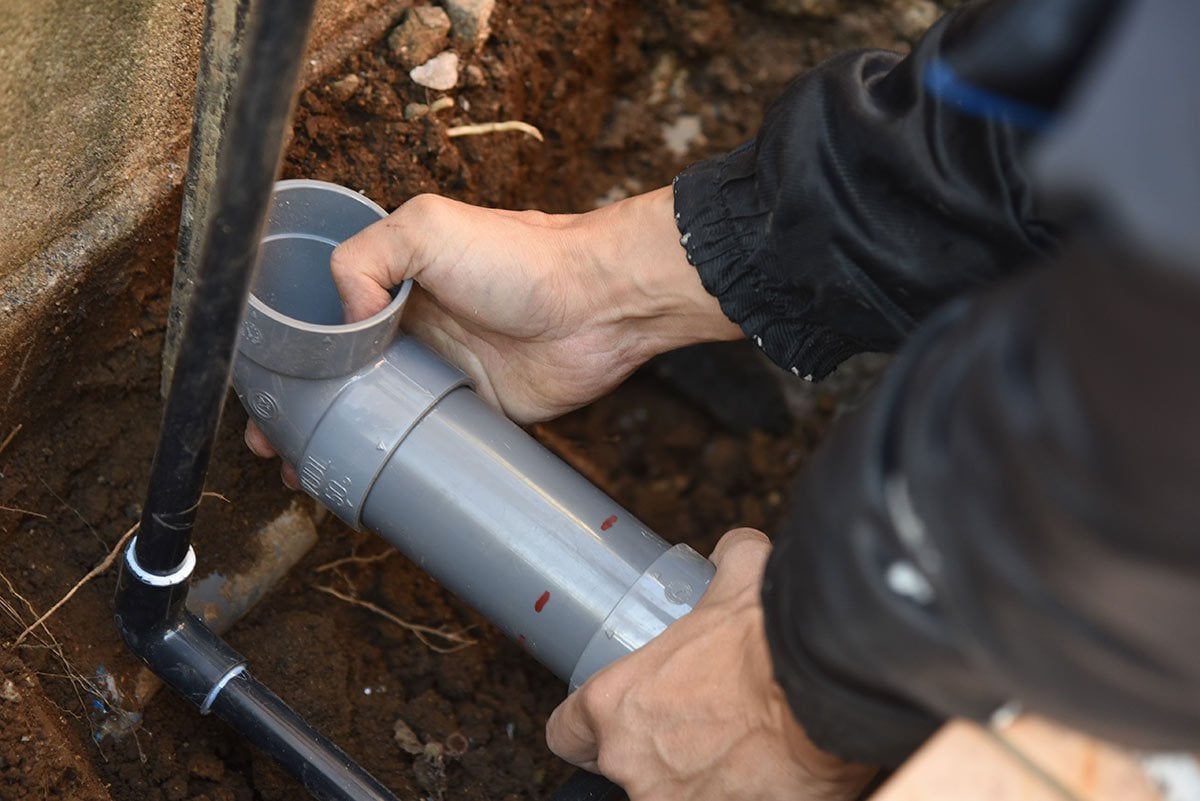


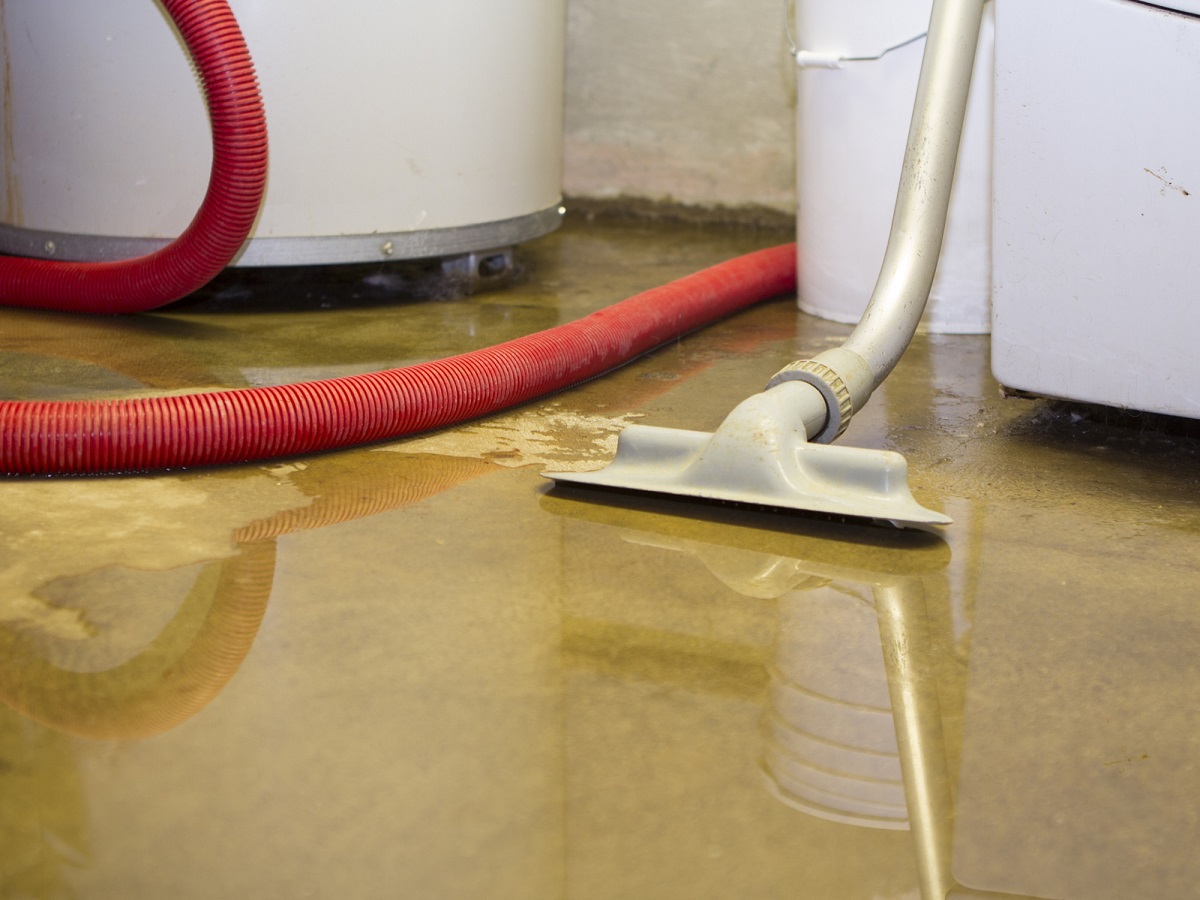

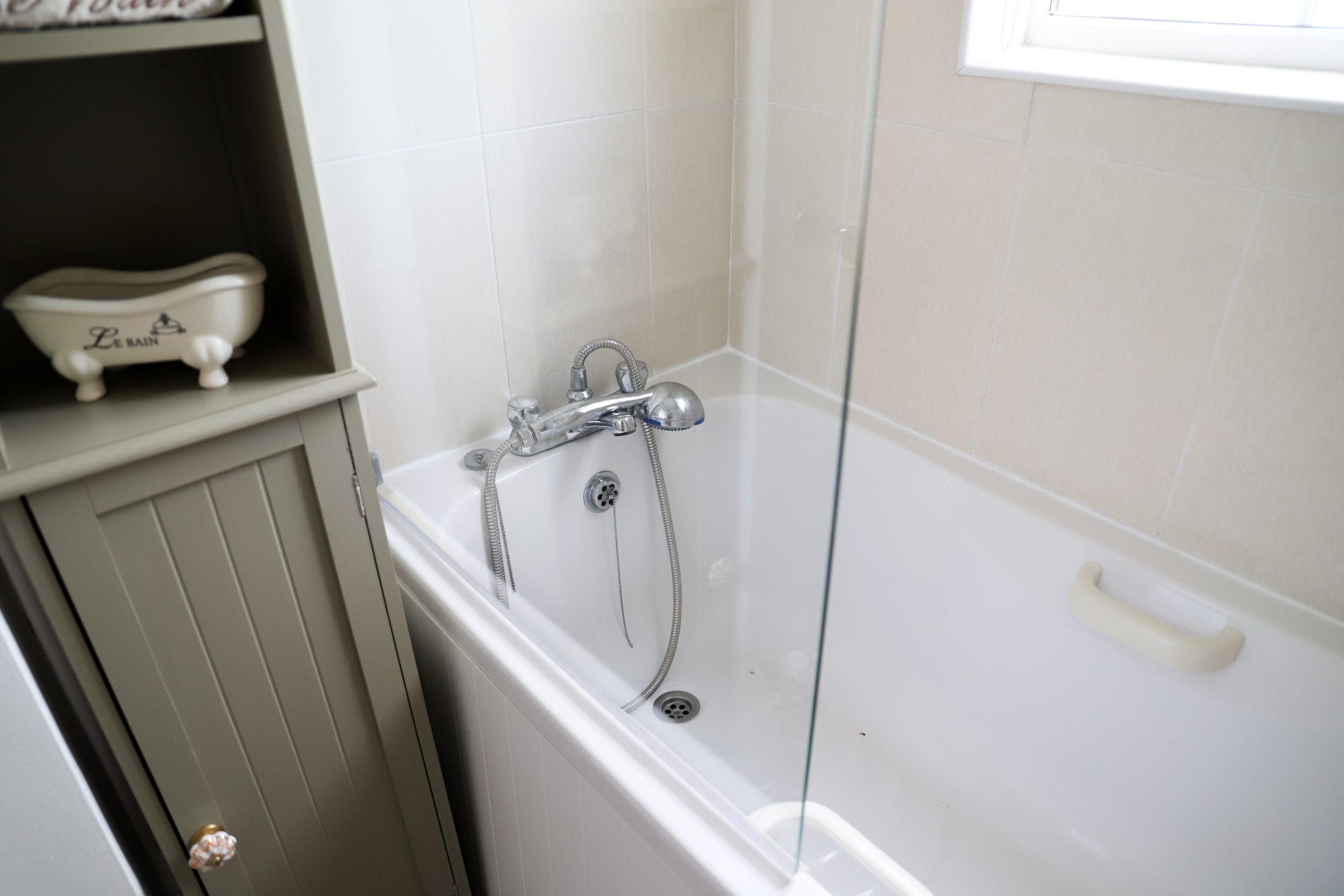
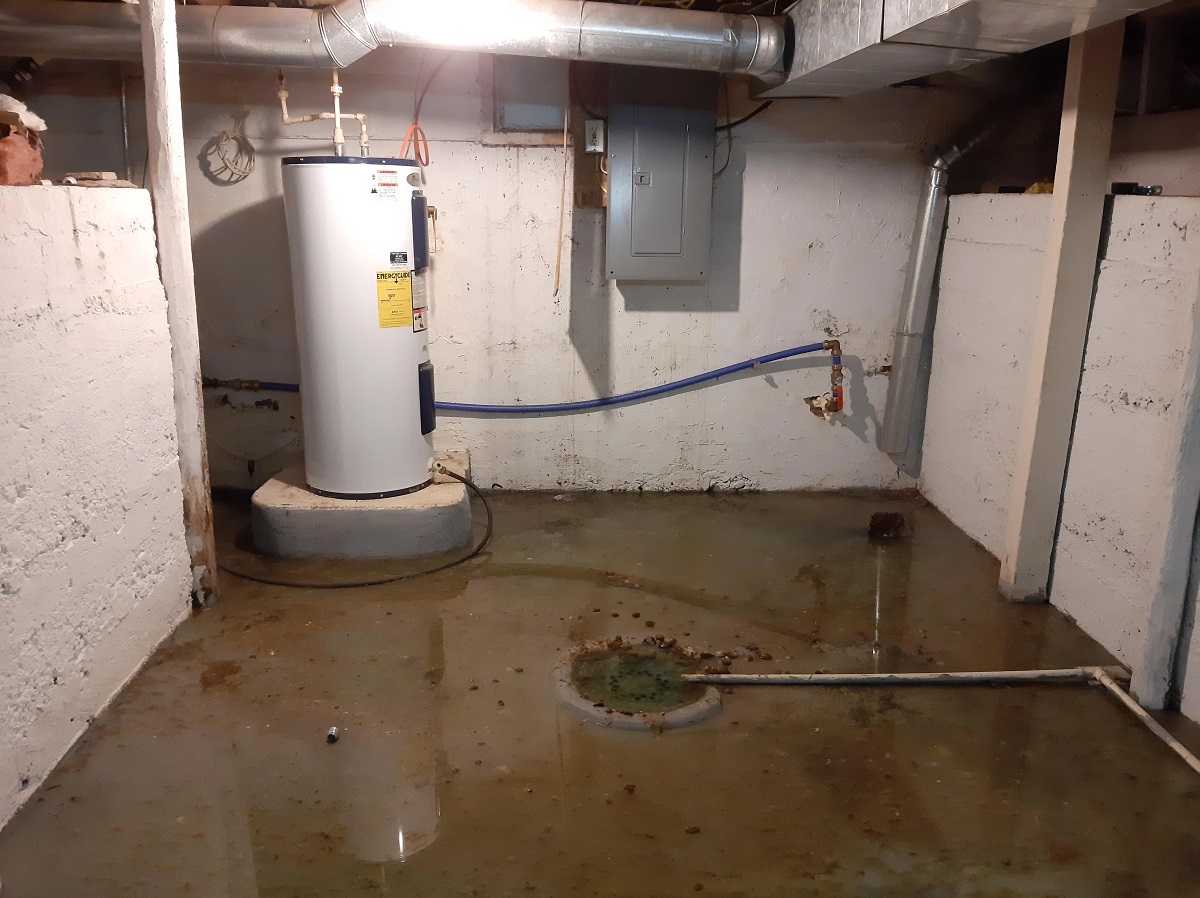
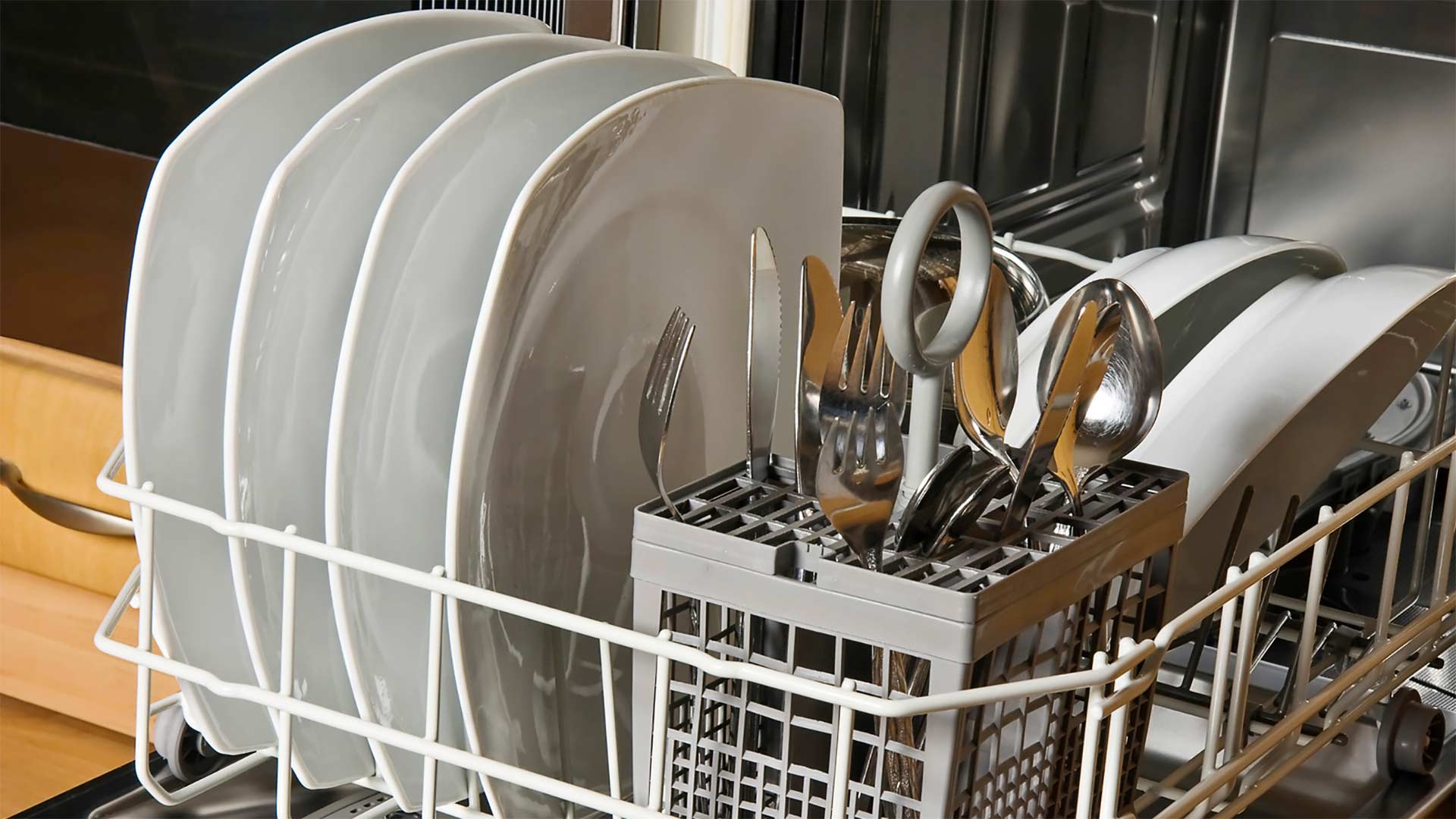

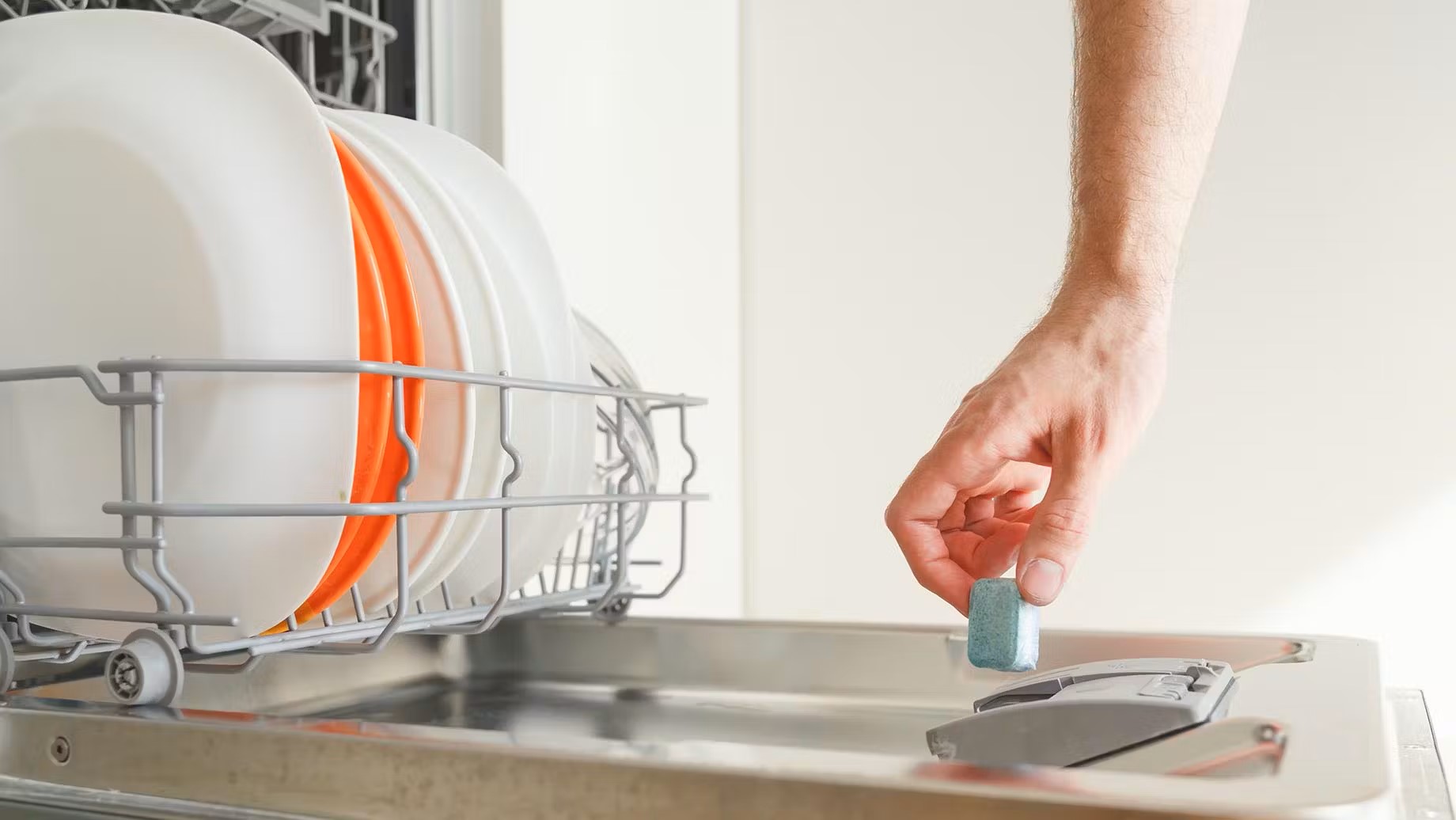


0 thoughts on “Sink Backing Up When Dishwasher Runs”